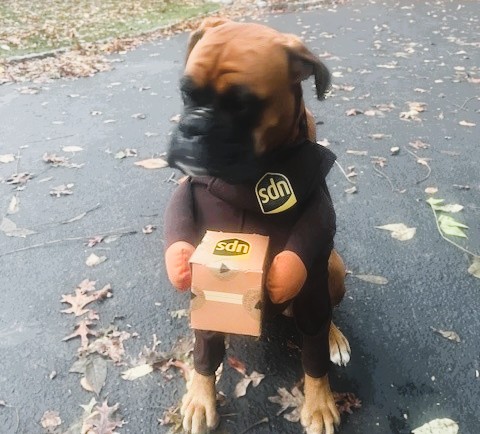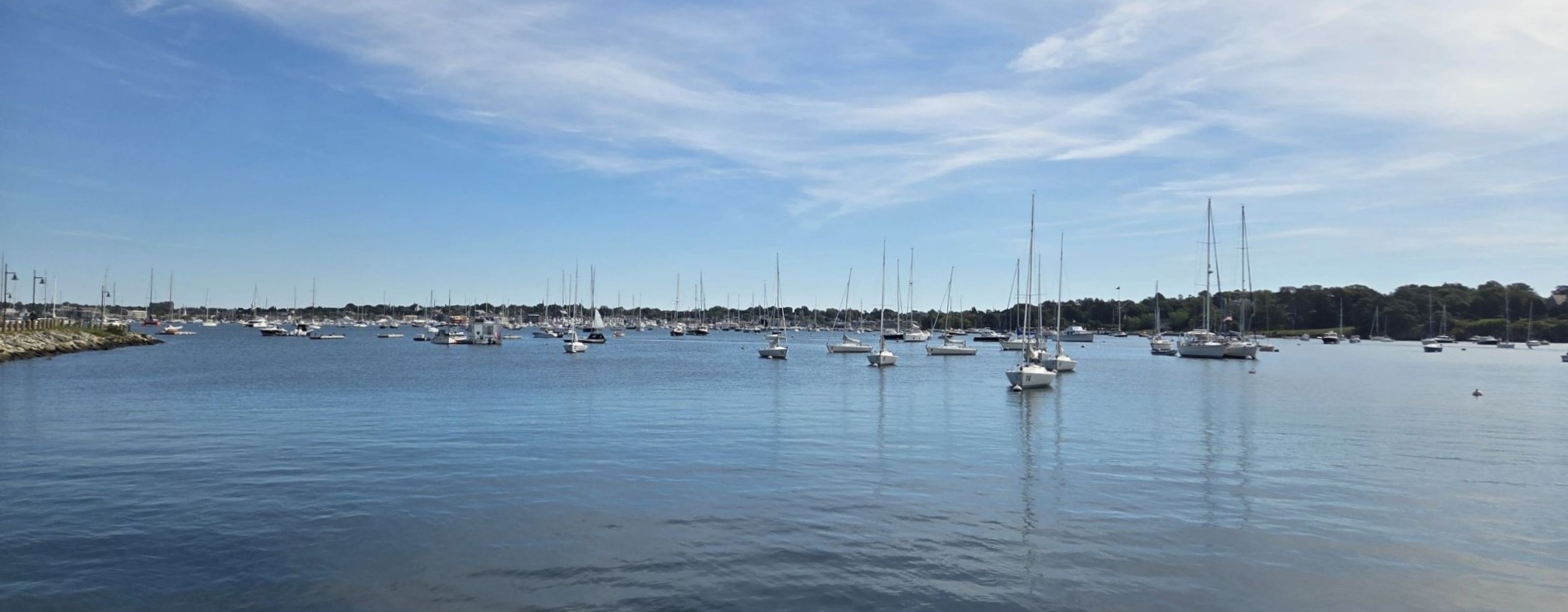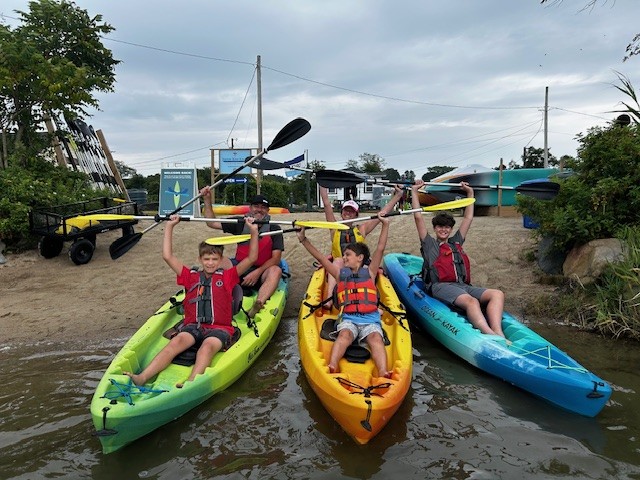It has been a few weeks since I joined Sonardyne and it has been a fantastic experience so far. I was lucky enough to join the week of the company’s annual Houston BBQ, so I couldn't pass up the opportunity to head south and meet all the great colleagues in Houston, right from the get-go.
As Business Development Manager, North America, I’ll be primarily focused on marine robotics, initially in the US Northeast and down the eastern seaboard.
The rise of BlueTech
BlueTech, as we might call it, is on a meteoric rise and the market for marine robotics and autonomous solutions is experiencing strong, sustained growth.
This is mostly driven by technological advances, lower barriers of entry, strong federal funding and government initiatives, like NOAA’s Ocean exploration Cooperative Institute and Navy programmes, as well as private investment.
That’s matched by increasing demand across multiple sectors, whether that’s offshore energy, coastal resilience and environmental monitoring or defence.
These drivers mean marine robotics and autonomy are no longer confined to small laboratories or within the secret walls of defence contractors. They’ve broken out and are proving themselves more than sci-fi fantasy. The future is now and the hype is all real!
How does Sonardyne facilitate the transition from concept to reality? We help build the infrastructure needed to get prototypes in the water by building test ranges and helping tech mature from concept to commercialization at a faster pace.
We work alongside leading oceanographic institutes like Woods Hole Oceanographic Institution and Scripps Institute of Oceanography to expand their horizons. We collaborate with growing oceanic and maritime institutes to ensure we are pushing boundaries and keeping the next generation of graduates inspired, motivated and in complete awe of what we can accomplish together.
The New England robotics hot spot
The New England East Coast area, in particular, has always been a strong market for robotics with top tier schools like Massachusetts Institute of Technology (MIT), Harvard University, Brown University, University of Rhode Island and the University of Massachusetts constantly pushing the boundaries of what robotics can accomplish.
These robotics powerhouses are bringing their tech to the sea, spending more time working with marine sciences, technology accelerators and securing funding opportunities to make dreams of the past tangible solutions right now.
One example of this type of ongoing collaboration is the Ocean Tech Hub, a federally designated tech hub based in Southeastern New England and led by the Rhode Island Commerce Corporation. The Hub leverages the academic community as well as its unique coastal assets (seven commercial ports and shallow and deep ocean access) to meet growing commercial demand for digital and physical testing and manufacturing environments for rapid prototype testing. In doing so, the Ocean Tech Hub seeks to advance ocean technology innovation and become a global leader in the growing ocean economy.
Advancing robotics – advancing autonomy
While remotely operated vehicles (ROVs) still dominate the underwater robotics market, the tide is turning – the future belongs to autonomy.
Increased battery life, continuously improving autonomous navigation systems and advances in AI are only pushing the growth in the autonomous underwater vehicles (AUV) market.
Monitoring of our oceans, whether for oil and gas, offshore wind, ocean science and research or defence and security, can be done with long duration data collection – with minimal human intervention. All while making the process more efficient, reliable and capable of complex tasks.
It’s an exciting space to be in. We’re moving toward a truly connected ocean — a digital ecosystem where autonomous platforms, sensors and subsea networks operate collaboratively, continuously gathering and transmitting data to inform decisions above and below the surface.
My journey and experience
So how did I find myself here?
I grew up in the oil and gas industry, moving around every few years during my childhood, as my father was a petroleum engineer with BP. I have lived in Alaska, Aberdeen, Louisiana and Texas, and spent my teenage years down in Bogota, Colombia. I moved back to Texas to finish high school, then wrapped up my bachelor’s degree in international business at Baylor University shortly thereafter.
After a year out, teaching English in Bangkok, Thailand, exploring Asia and then spending several months helping the tsunami recovery efforts in 2004-5, I moved back to Texas to complete my MBA.
I applied my MBA to the retail industry, then moved over to the oil and gas market in 2012, spending seven years with Heerema Marine Contractors before joining Seaway7 in 2019. This initiated my move to Rhode Island a year later, joining the “gold rush” of offshore wind in the US.
It was a great experience, forging a new presence in the Northeast and trying to get a brand new industry off the ground which brought plenty of complex challenges both commercially and politically.
Driving and delivering change and innovation
All in all, I’ve spent most of the past 13-plus years focused on business development within the marine construction sector, building new infrastructure, from pipelines and floating production units to offshore wind foundations and inner-array cable installations.
What drives me isn’t just finding new clients and opportunities but collaborating early in the design and field development stages to apply cutting-edge technology, innovative engineering and creative delivery models.
I’ve worked across business units to develop and execute strategies for some of the most complex and forward-thinking projects. That drive — to deliver new solutions and push the boundaries of what’s possible — is what ultimately brought me to Sonardyne.
Here in the US, I’m eager to use my experience in business development and strategic partnerships to uncover opportunities and solve problems the market doesn’t yet see.
It’s not all robotics…
Of course, life isn’t all about work. What also drives me (sometimes nuts) is my three boys (13, 11 and 9 years old) that I can talk about all day, so I’ll keep it brief for now. The three of them keep my wife and I extremely busy with sports and school events throughout the year.
When we have free time, we are at the beach, in the mountains or exploring all the opportunities the great outdoors has to offer around New England. We also have a very active three-year-old boxer who keeps us busy when we try and find an opportunity to relax at home. You’ll probably see her jumping on the window during a Teams call, she doesn’t like to be left out of anything!

If I haven’t spoken to you yet, please feel free to reach out at any time. I am working remotely and always eager to jump on a call, with or without our boxer!
Images, from the top:
- Top, a view at Sail Newport in Rhode Island from Dan Zatezalo
- Dive Technologies’ (now Anduril) AUV during testing. See post.
- Mesobot team members Lui Kawasumi and Eric Hayden deploy the vehicle off the Nautilus. Photo by Marley Parker_Ocean Exploration Trust. See post.
- Nautilus and DriX. See post.
- Zach and family, with the Thialf in the background. Zach and family kayaking. Sabine the boxer.





